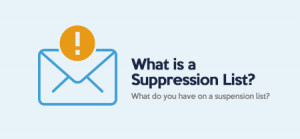What email throttling entails is the regulation of the number of email messages sent to a specific ISP or remote server at a go. If a single sender sends high-volume messages at once, the ISPs may flag such messages as spam and subsequently block them. Although this appears as some form of restriction, it comes with some great opportunities for senders.
What is Email Throttling? Per concept, email throttling is the process of intentionally limiting the number of emails you send through a server to one ISP or remote server over a given period of time.
To avoid getting your messages blocked by the ISPs, you need to spread the delivery. This is beneficial in some ways. First, you can determine how many emails get delivered during high-traffic periods, thus increasing your chances of getting favorable responses for your email campaigns. The data from such can also come in handy in setting up future sends.
Also, when you throttle, you get to manage responses effectively. For example, if you included a phone call as a call to action in your emails, throttling will afford you sufficient time to manage your call center traffic. You also get a firmer grip on your website’s server bandwidth in the case of special sales and promotions.
Throttling is unfavorable for high volume senders who prioritize maximum response, considering that a favorable response is achievable only through timely delivery. One of the websites/businesses that fall into this category is the daily deal site. The window of opportunity for maximum sales in such a business is usually short. Hence, they need all their email messages delivered to subscribers immediately. In such situations, the sender must ensure a sterling email reputation as per the delivery. Once an ISP perceives a sender to be a spammer, they raise the standards to be stricter. Hence, it is essential to stick to the best practices. If it helps, consult a professional email provider to set and maintain these standards for you.
Moving forward, let us see how throttling works and its influence on email sending.
What Leads to Email Throttling?
When an ISP pegs back the number of acceptable emails from a specific sender within a period, they are throttling the emails. Once throttling is in place, emails sent above the limit will be rejected automatically. This leads to a high number of bouncebacks. Another word of email throttling is “deferral.”
The duration of limitation depends on the situation, but it is temporary most times. The standard error messages associated with throttling include: “User’s mailbox is over quota” or “User is receiving mails too frequently at the moment, kindly try again later.” These 400 classes of errors are usually cleared in not later than 72 hours.
If your email is not delivered to the prospective recipient, it may be because the recipient’s mailbox is full. It may also be because all the ports on the server are closed, hence, unable to receive emails. The third reason may be the inability of the receiving server to identify your IP address or addresses, thus treating your messages as spam. To avoid this, always warm up to your recipients, so that they are familiar with you.
It is common for recipients to mark the sender as spam. While the server will not block you for this, it will not receive more emails until they get the reactions from other prospective receivers of the same email.
Email throttling should be handled properly to ensure it does not affect your sending reputation adversely.
How To Prevent Email Throttling?
There are a couple of strategies to prevent the issue of throttling, including:
- Scheduling your emails such that they are sent over a longer timeframe.
- Segmenting your emails according to domains. You may also divide your lists into several parts, for instance, grouping marketing, and transactional email differently so that the reputations are treated separately.
- Sending emails at earlier times, so that every recipient gets the email before the “completions” deadline.
You cannot separate email throttling from the email delivery process. Considering the complexity of the entire process and the individual requirements of each ISP, you should work with a competent email deliverability expert. You, however, stand better chances of avoiding email throttling if you stick to the best practices provided in this text. This portrays you as a legitimate sender to the ISPs, and they will deliver your emails as expected.


![Mail Merge Explained: Definition, Uses, Tutorial [2025]](https://ik.imagekit.io/debounce/wp-content/uploads/2024/06/mail-merge-explained-300x139.png)


